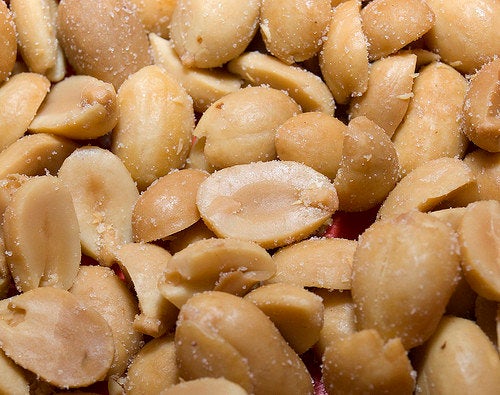
Several years ago when I was a Senate staffer, I was taking notes at a Capitol Hill information meeting on hunger in Africa when a representative from UNICEF mentioned a new product that had the potential to save the lives of millions of starving children. She called it "Ready-to-Use Therapeutic Food," (in aid-speak, RUTF). But as she described it, it became clear that this miraculous new therapeutic food was basically peanut butter, with some milk powder, vitamins and minerals mixed in.
Peanut butter. Who would have guessed?
If you think of peanuts as just something to eat at ball games or as the essential ingredient in a peanut-butter-and jelly sandwich, you are seriously underestimating Arachis hypogaea. Peanuts are 25% protein, and they're especially rich in niacin, fiber, magnesium, vitamins B and E, manganese, iron and phosphorous. In fact, they contain over 30 essential nutrients.
Peanut butter, by the way, isn't actually peanuts plus butter. Peanuts are rich in oil, so it's only necessary to grind them up and add a little sugar, salt and corn syrup to make the stuff we spread on bread. And yes, peanut butter is about 50 - 52% fat, so eating too much of it can add a few inches to the waistline of a normal, healthy person.
But excess weight isn't a problem in the Horn of Africa right now, where drought and famine of historic proportions have put millions of lives at risk. The most vulnerable of these, of course, are children. The bodies of small children, especially those under the age of six, grow at a rapid rate and require a full complement of basic nutrients to fuel the process. Deny small children the minimum nutrition they need, and they soon fall into a perilous condition known as Severe Acute Malnutrition, or "SAM."
For many children, SAM is a death sentence. For others, it's something almost as bad. It's a brain killer. Scientists tell us that our brains do most of their growing before the age of six, and grow especially fast in our first three years. These are the critical years when we develop the intellectual toolkit that we will carry with us for the rest of our lives. And brains denied essential nutrients during these early years never fully recover.
Regular feedings of mother's milk could save many of these victims of SAM, but starving mothers produce little milk, and supplying children with processed milk requires refrigeration and transport that are expensive and impractical in much of the developing world. Milk powder would be helpful, but it needs to be mixed with water to make milk, and clean drinking water is typically as scarce as food in drought-ravaged regions.
But milk powder can be mixed with peanut butter, which does not require refrigeration, is easy to package and inexpensive to transport. And if you're looking to feed starving children, why stop with milk powder? You might as well pack the tasty goo with all of the essential vitamins and minerals a child requires. Which is why a typical serving of RUTF contains - along with the basic peanut butter, milk powder and sugar - as much vitamin C as you would find in two oranges and as much potassium as in two bananas. And, of course, it tastes great.
What the people at UNICEF, Doctors without Borders, World Vision, Muslim Aid, USAID, Save the Children and all of the other aid agencies fighting hunger around the world know is that fortified peanut butter is a lifesaver. It's a miracle food.
Think about that next time you're at the ballpark and the guy in the aisle yells, "Hey, peanuts!"
